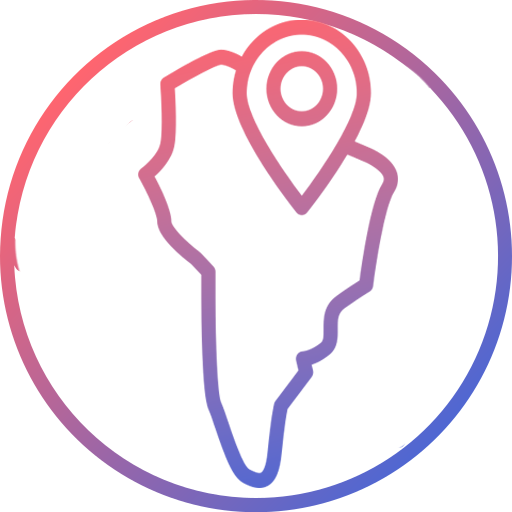Frequently Asked Questions
How Can I Use eSIM Profiles for Seamless Connectivity on Remote Work Trips?
Discover how to use eSIM profiles for uninterrupted connectivity during remote work trips, ensuring efficient collaboration and productivity.
Remote work trips often require reliable and uninterrupted connectivity for communication, collaboration, and task management. eSIM technology provides a flexible solution for digital nomads and professionals working from different locations. By managing eSIM profiles effectively, you can ensure consistent and cost-efficient service, even in remote or international destinations.
Here’s how to use eSIM profiles for seamless connectivity during remote work trips.
1. Choose eSIM Providers with Strong Network Coverage
Reliable network coverage is essential for smooth connectivity during work.
Tips:
- Research providers that offer coverage in both urban and rural areas of your destination.
- Check for providers with partnerships across multiple local carriers for robust service.
- Choose global or regional plans for coverage across multiple countries.
Example: A digital marketer selected an eSIM plan with access to 4G networks in over 100 countries, ensuring reliable service while traveling through Southeast Asia.
2. Preload Multiple eSIM Profiles for Flexibility
Having multiple profiles provides backup options in case of network issues.
Steps:
- Purchase eSIM plans from different providers to ensure redundancy.
- Activate and store profiles on your device before leaving for your trip.
- Label profiles with names like "Primary Work Plan" and "Backup Plan" for quick access.
Example: A software developer preloaded two eSIM profiles for a month-long trip to Europe, switching to the backup plan when their primary network experienced downtime.
3. Leverage Dual SIM Functionality for Better Management
Dual SIM devices allow you to manage work and personal communication seamlessly.
Benefits:
- Use one eSIM for work-related tasks and another for personal connectivity.
- Avoid mixing professional and personal expenses by keeping them separate.
- Switch between profiles based on network performance or data needs.
Example: A project manager kept their work eSIM active for video calls and email, while using a personal eSIM for streaming and messaging apps.
4. Optimize Data Usage for Remote Work Tools
Efficient data management ensures your plan lasts longer without interruptions.
Tips:
- Lower video call resolution on platforms like Zoom or Microsoft Teams to conserve bandwidth.
- Disable background refresh for apps that aren’t essential to your work.
- Use offline features for apps like Google Workspace or Microsoft 365 to reduce data usage.
Example: A writer working remotely in South America reduced data consumption by downloading documents for offline editing and uploading them only when connected to Wi-Fi.
5. Plan for High-Data Activities During Wi-Fi Availability
Scheduling data-heavy tasks for times when Wi-Fi is available helps save eSIM data.
Tips:
- Use hotel or coworking space Wi-Fi for uploading files or attending lengthy video meetings.
- Secure your connection with a VPN when using public Wi-Fi for work tasks.
- Reserve mobile data for essential communication and navigation.
Example: A remote worker in Bali relied on coworking space Wi-Fi for video conferences, reserving their eSIM data for email and messaging.
6. Monitor Data Usage to Stay Within Plan Limits
Tracking your data usage helps prevent overages and ensures uninterrupted service.
Steps to Monitor Usage:
- Use your device’s built-in tools to check data consumption:
- iOS: Go to Settings > Cellular > Cellular Data Usage.
- Android: Navigate to Settings > Connections > Data Usage.
- Check real-time usage in your eSIM provider’s app.
Example: A graphic designer tracked their daily usage, ensuring their 20GB plan lasted the entire trip without needing a top-up.
7. Back Up eSIM Profiles for Emergencies
Saving eSIM details ensures you can restore connectivity quickly if needed.
Steps:
- Store QR codes and activation details in a secure cloud service.
- Take screenshots of profile settings for quick reference.
- Keep provider contact information handy for troubleshooting.
Example: A content creator restored their eSIM profile after accidentally resetting their phone during a remote work trip in Asia.
8. Use Portable Wi-Fi Hotspots with eSIM Support
Portable hotspots with eSIM capabilities provide shared connectivity for multiple devices.
Benefits:
- Connect laptops, tablets, and phones to a single eSIM plan.
- Ensure strong connectivity in areas with poor mobile signal.
- Share internet access with colleagues if working as a team.
Example: A remote development team used a portable Wi-Fi hotspot to connect their devices while working from a rural location.
Conclusion
Using eSIM profiles for remote work trips ensures seamless and reliable connectivity, enabling professionals to stay productive anywhere. By choosing suitable plans, optimizing usage, and leveraging backup options, you can enjoy uninterrupted service while focusing on your work.
Unoroam offers flexible eSIM plans tailored to remote workers, providing reliable and cost-efficient connectivity across the globe.
"Planning a remote work trip? Use our booking widget below to select an eSIM plan tailored to your destinations, duration, and data needs. Stay connected effortlessly and efficiently wherever you go!"
Create new eSIM
Popular Destinations

Europe
Switzerland
